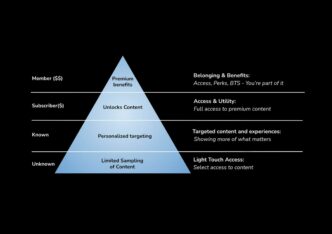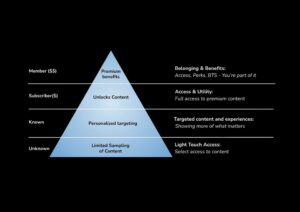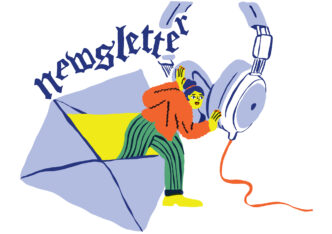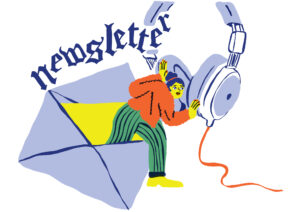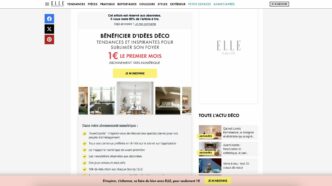
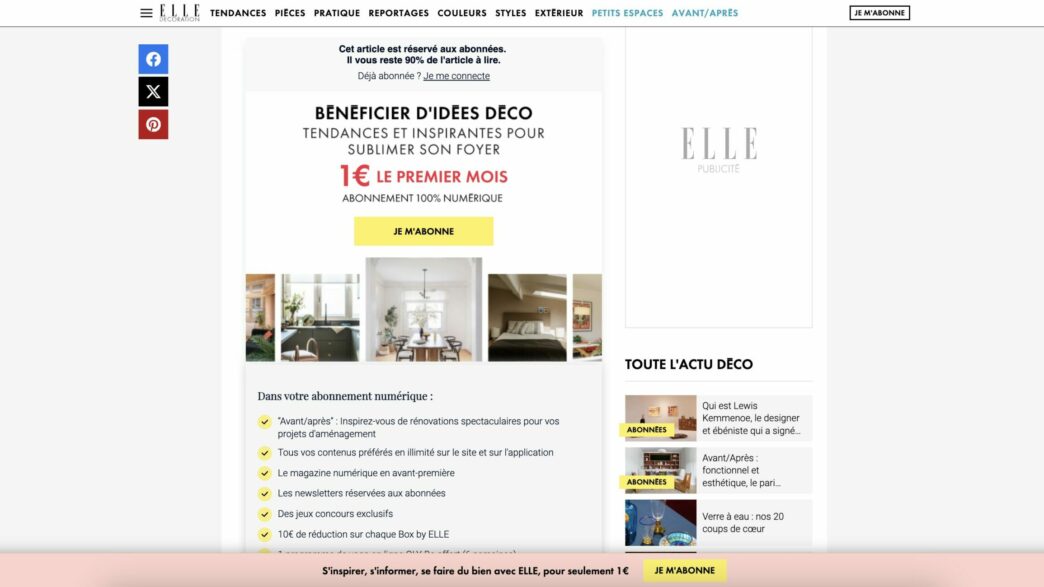
Adapting the paywall to a reader’s context, and particularly to the editorial topic they’re interested in, has enabled the women’s magazine ELLE to boost conversion rates. We spoke to Sophie Thierry-Clébant, Premium Manager, who tells us all about the project.
Where did you get the idea of contextual paywalls from?
When we launched the premium offer on ELLE, we obviously looked for the paywall model that would work best:
- In terms of visuals, images and colors
- In terms of how to present the offer
We often offer strong promotions, which we adapt to current events or seasons (sales, vacations, Mother’s Day, etc.):

These paywalls work very well, but you can’t run promotions all the time!
We needed to liven up the non-promotional periods by developing a more harmonious and coherent creative concept, linking print and digital. We also wanted to adapt our paywall to the profile of our female readers based on their browsing behavior, to ensure we met their expectations. Thus the idea of contextual paywalls was born!
What were your constraints in this project?
We have a predominantly mobile audience, so the paywall needs to be short, easy to read and understand quickly.
Our other constraint is a legal one: we have to show all subscription benefits in the paywall directly (since they’re not listed on the next registration page).
What was the outcome of this thought process?
We therefore thought about a fixed composition of paywalls that could be adapted to the reading context and the section the reader is in, via:
- A targeted tagline
- A frieze of visuals that are relevant to the topic
- As well as an adapted benefit, highlighting the editorial pieces most appreciated by subscribers in that specific section
We have now developed:
- 1 generic paywall, deployed on the site’s smaller sections
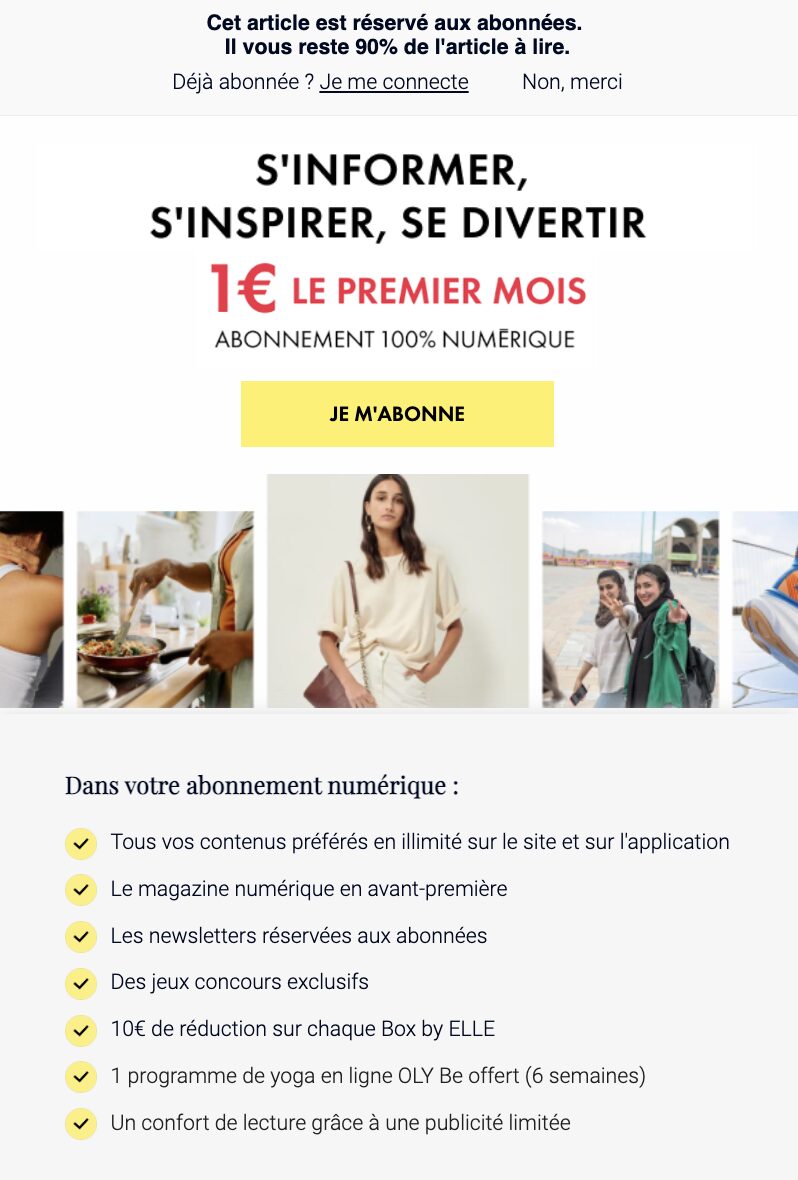
- 7 paywalls for various editorial topics:
- Society (“Société”)
- Fashion (“Mode”)
- Psychology-relationships (“Psycho-sexo”)
- Beauty (“Beauté”)
- Design (“Déco”)
- Cooking (“ELLE à table”)
- Well-being / Fitness (“Forme / bien-être”)
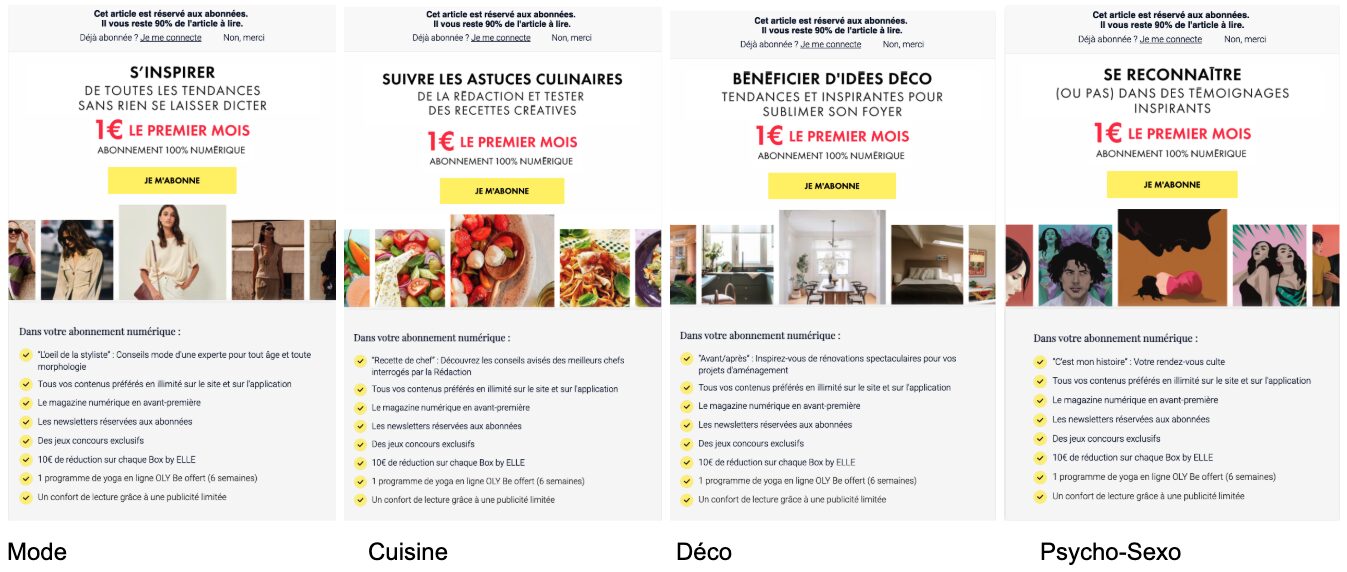
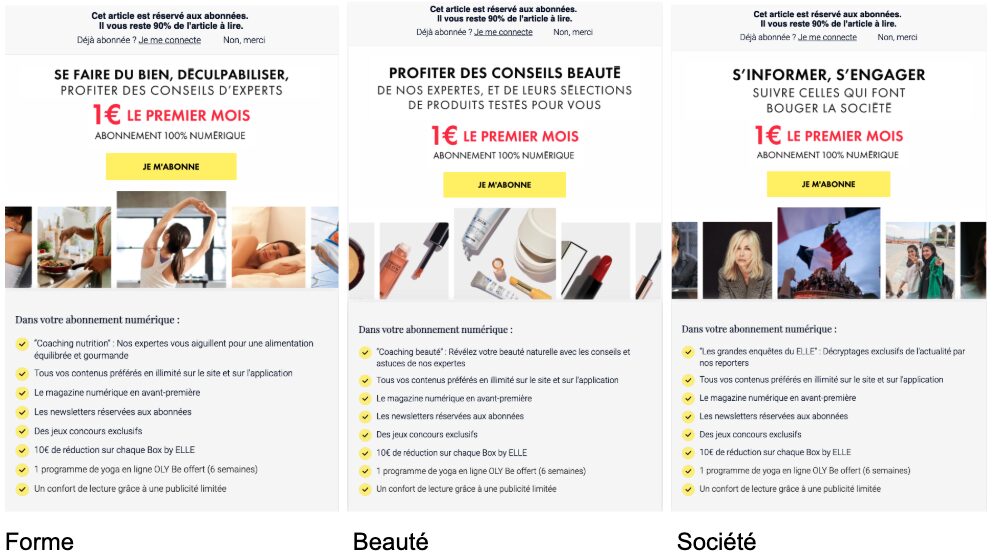
How did this work technically?
We’ve been using Poool’s journey builder for several years now, so it was very easy for us to put these ideas into practice. All we had to do was upload the subject tags into Poool, before building an adapted scenario for each rubric.
In the Appearances section, we created the generic template, duplicated it 7 times, adapted it to each context by modifying the tagline, the visual frieze and the first subscriber benefit and integrated then integrated each into the relevant scenario.
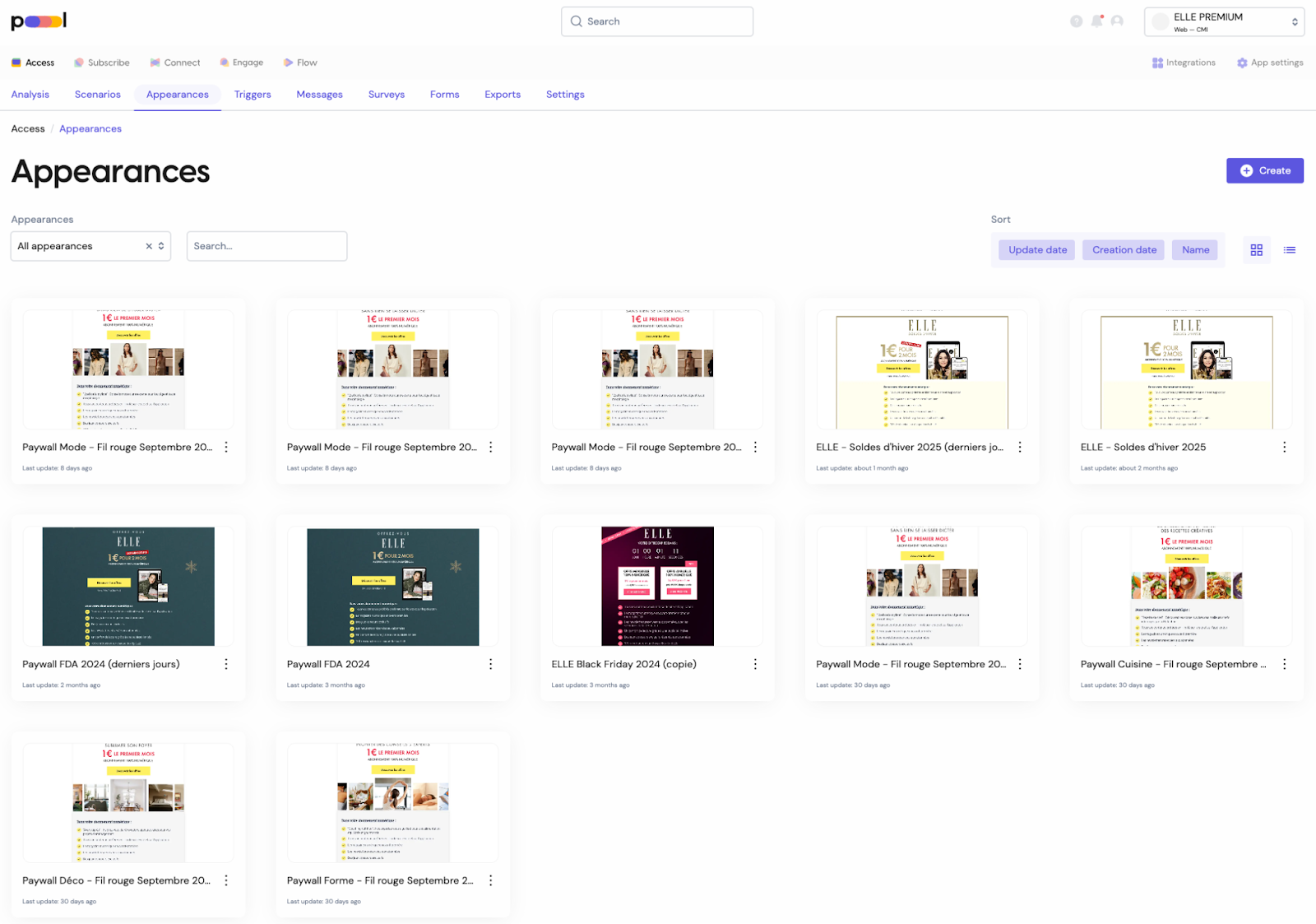
Did you launch on 100% of your audience straight away?
On the 7 major sections concerned, we A/B tested the generic paywall vs. the contextual paywall 50-50, to analyze the impact on conversions. We also tracked click-through rates, but our main KPI remains the conversion rate.
What are the results of these dynamic paywalls?
Custom paywalls clearly outperformed generic paywalls. Specifically, 3 sections showed a leap in conversion rate of +50% on average on contextual paywalls versus the generic paywall.
Other sections trended towards a +10% conversion rate, and only 2 sections performed either similarly to or slightly below the generic paywall. In the last 2 cases, we believe that the teasers were not optimal and are currently reworking them, before continuing the A/B tests to validate our hypothesis.
Overall, in the last quarter of 2024, the conversion rate to subscription using the paywall source rose by +20%!
Have you put any other dynamic strategies in place that adapt to a reader’s context?
Yes, absolutely. It’s something we’ve had for a few years now, but readers of certain newsletters have seen paywalls adapted to the theme of their newsletter:
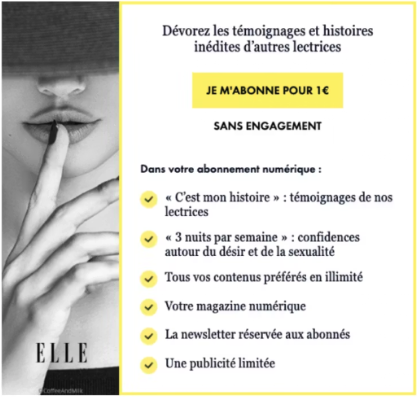
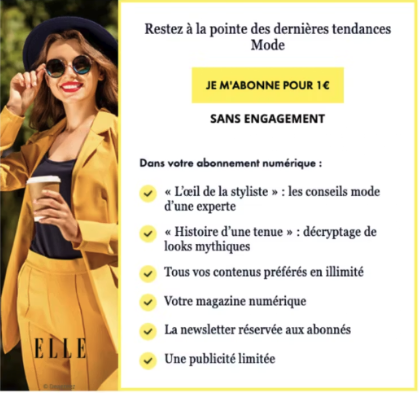
The lesson to anyone reading:
In conclusion, contextualizing paywalls according to reader preferences and needs is proving to be a particularly effective and profitable way of optimizing our KPIs.
By placing the reader at the heart of our strategies, we can send the right message, at the right time to maximize the impact of our actions. It’s a great example of how to increase conversions when you’re under pressure with little time on your hands!

